ARTICLE: How to Kickstart your Software Development Project with AI Assistance
As we ride the digital wave, AI is playing an increasingly central role in our lives. From streamlining processes to automating repetitive tasks and promoting efficiency, AI is truly changing the game. One area where this shift is most pronounced is in accelerating the software development lifecycle, fostering quicker iteration cycles, and reducing the time taken from ideation to deployment. There’s a certain degree of irony involved here as it appears that AI is significantly impacting the fields that were previously thought to be invulnerable to AI-led disruption.
A GLIMPSE INTO THE FUTURE: The impact of AI on Software Development
In the near future, we envision a significant shift in the way requirements are gathered, software is developed, and UI design is approached. Clients will be interacting directly with intelligent AI systems to outline their project needs. These AI systems will not only translate these inputs into detailed specifications but will also actively participate in the dialogue.
During the requirements-gathering phase, the role of the AI will be more than just a passive interpreter. It will probe deeper, asking the right questions to ensure all essential information is captured. Through its analytical capabilities, it will check for gaps in the requirements, prompt for additional information where necessary, and help reconcile any contradicting requests.
In the actual software development process, AI will automate many stages, from generating code to testing and bug identification. This new approach will foster quick iterations of product versions, making potential misunderstandings in requirements less consequential. With AI’s speed and automation, necessary adjustments can be made faster and more efficiently than traditional methods.
But it doesn’t stop there. One of the more exciting roles AI is set to take on is in the realm of UI design. AI-powered systems will be capable of proposing comprehensive and user-friendly designs based on the requirements captured in the backlog. These systems can also adapt and iterate designs quickly based on user feedback or changes in requirements.
This proactive approach by AI in all three crucial phases of software development — requirements gathering, development, and UI design — is set to significantly enhance overall project efficiency and effectiveness, shaping the future of the software industry.
This might sound like a distant future scenario, but the reality is, we’re not too far off. In fact, some aspects of this vision are already in motion, a testament to the rapid advancement of AI technology in the field of software development.
If you’re curious about how they’re already transforming our approach to creating software, I invite you to continue reading. In the next section, I’ll showcase a real-world scenario, underscoring just what’s possible with current AI technologies.
AI IN ACTION: Transforming e-mails into structured backlogs and clickable prototypes
Imagine you have a chain of emails discussing a new feature or product enhancement. In traditional settings, the project manager or business analyst would painstakingly extract the requirements from these emails, a time-consuming task with the risk of oversight.
However, with the power of AI, tools like ChatGPT can efficiently and accurately extract these requirements from the unstructured text within the emails, minimizing human error and saving valuable time.
But the AI’s role extends beyond mere extraction. It can also suggest potential enhancements and additional features while identifying gaps based on past patterns and industry trends.
Once the requirements are clearly defined, AI can help structure these into a comprehensive product backlog. This backlog can be neatly categorized into epics, features, and user stories, and directly uploaded to project management platforms such as Azure DevOps.
The final phase involves leveraging AI in the realm of design. Based on the backlog, the AI can propose a layout for a dashboard, acting as your virtual UI designer.
Sounds exciting, doesn’t it? Let’s delve deeper and see how this plays out in a step-by-step process:
STEP 1: Extracting Requirements
Here, we have a chain of emails discussing the potential features of our new product. At first glance, the information might seem unstructured and far from complete. However, by using an AI tool like ChatGPT, we can efficiently extract the key requirements embedded in these conversations. Let me guide you on how to turn this seeming chaos into a structured blueprint for our product.
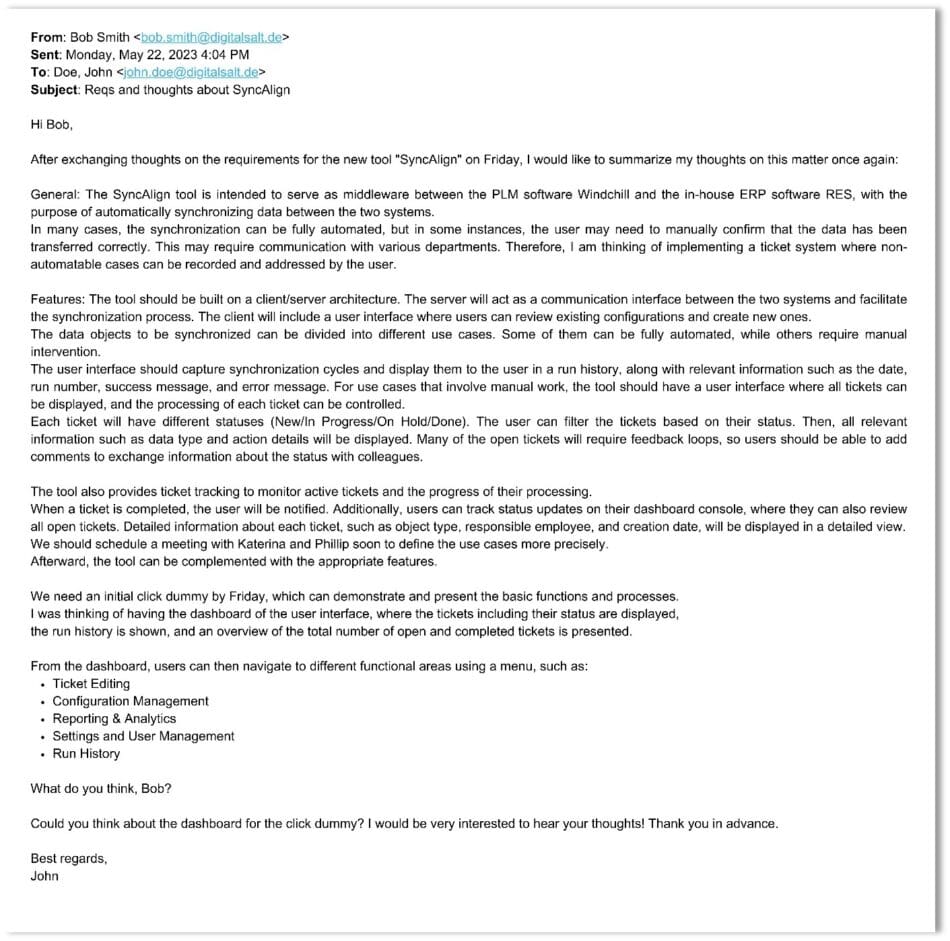
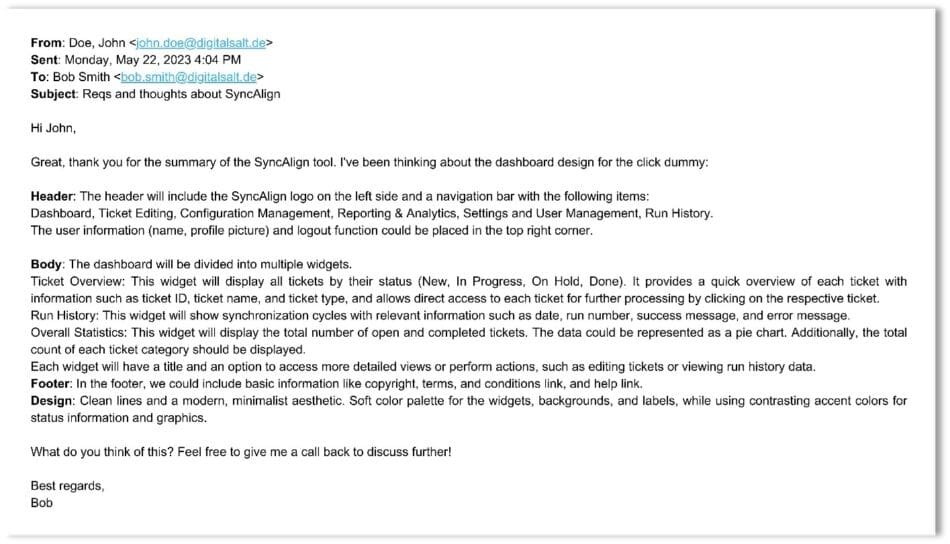
With this prompt, we get a pretty impressive initial shot, with a summary of the requirements from the email thread.

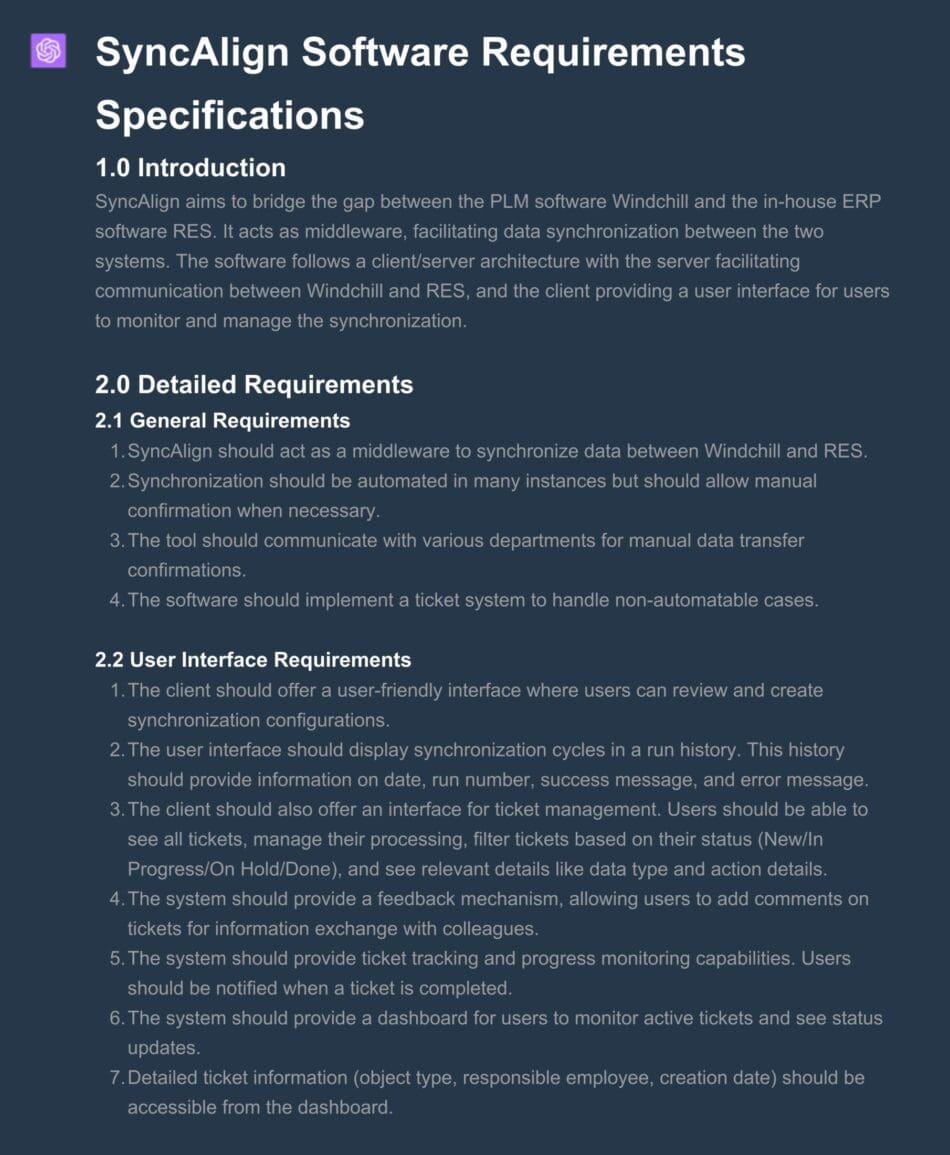
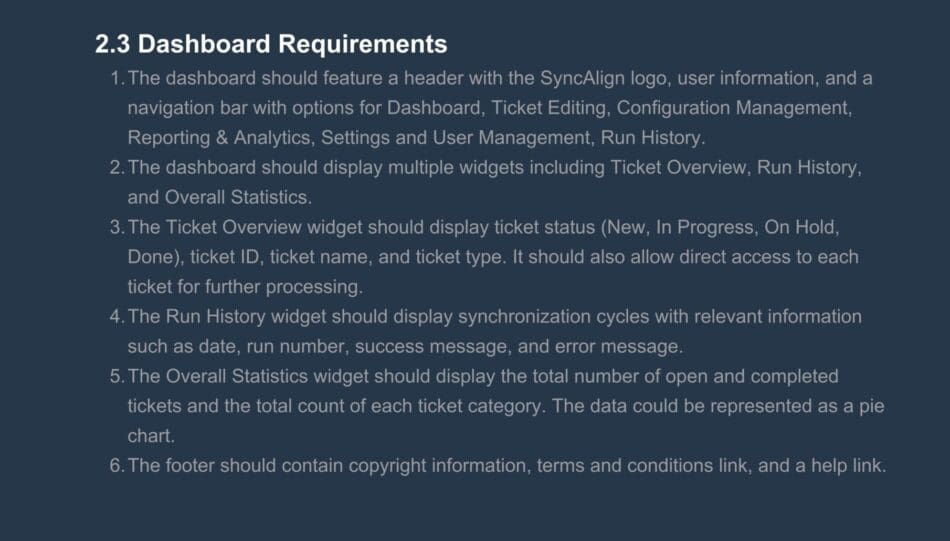
STEP 2: Identifying enhancements and gaps
Once the requirements have been extracted, ChatGPT steps in to propose potential enhancements and additional features. It also identifies gaps in the requirements, drawing from past patterns and industry trends.

Today, some of the suggestions provided by AI may come across as generic. However, envision a future where AI, like a diligent member of your team, is trained directly on your company data.
The implications of this are profound. The AI would be capable of offering custom-tailored insights, recommendations, and solutions unique to your business.
And this is not a far-off vision. Big-tech companies are actively working to make this a reality. For instance, Microsoft is innovating with their 365 Copilot to include all your company data from SharePoint and other data sources within your model. This means that your AI assistant will have a deep understanding of your business context and provide truly customised support. We are not talking about years in the future – this reality is just months away.
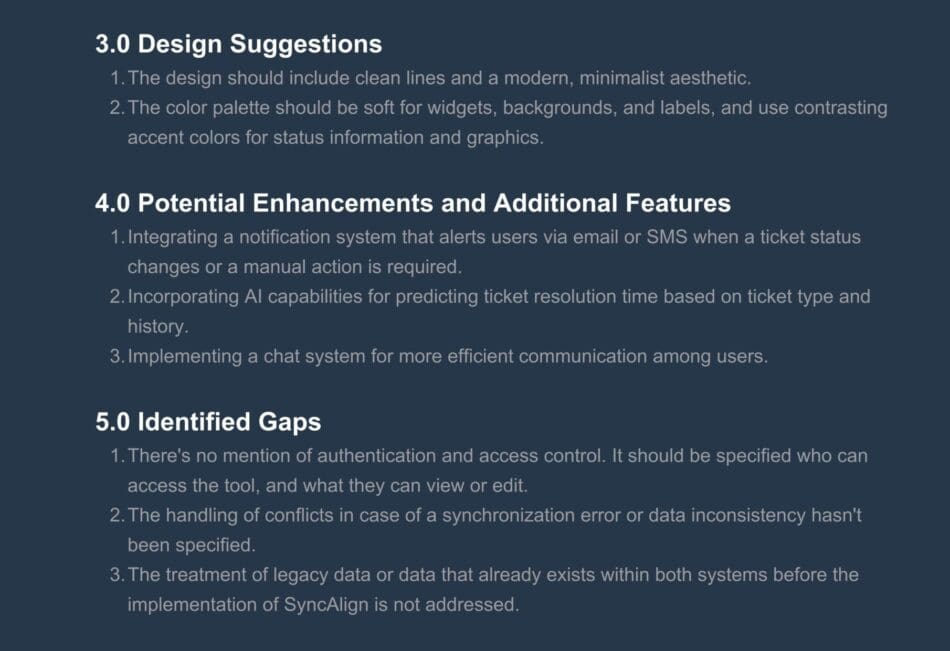
STEP 3: Structuring the Product Backlog
With a well-defined list of requirements in hand, ChatGPT can now help organize these into a comprehensive product backlog. This includes categorizing the backlog into distinct epics, features, and user stories, ensuring clarity and coherence.

And indeed, the AI understands the concept of an agile product backlog. See for yourself!

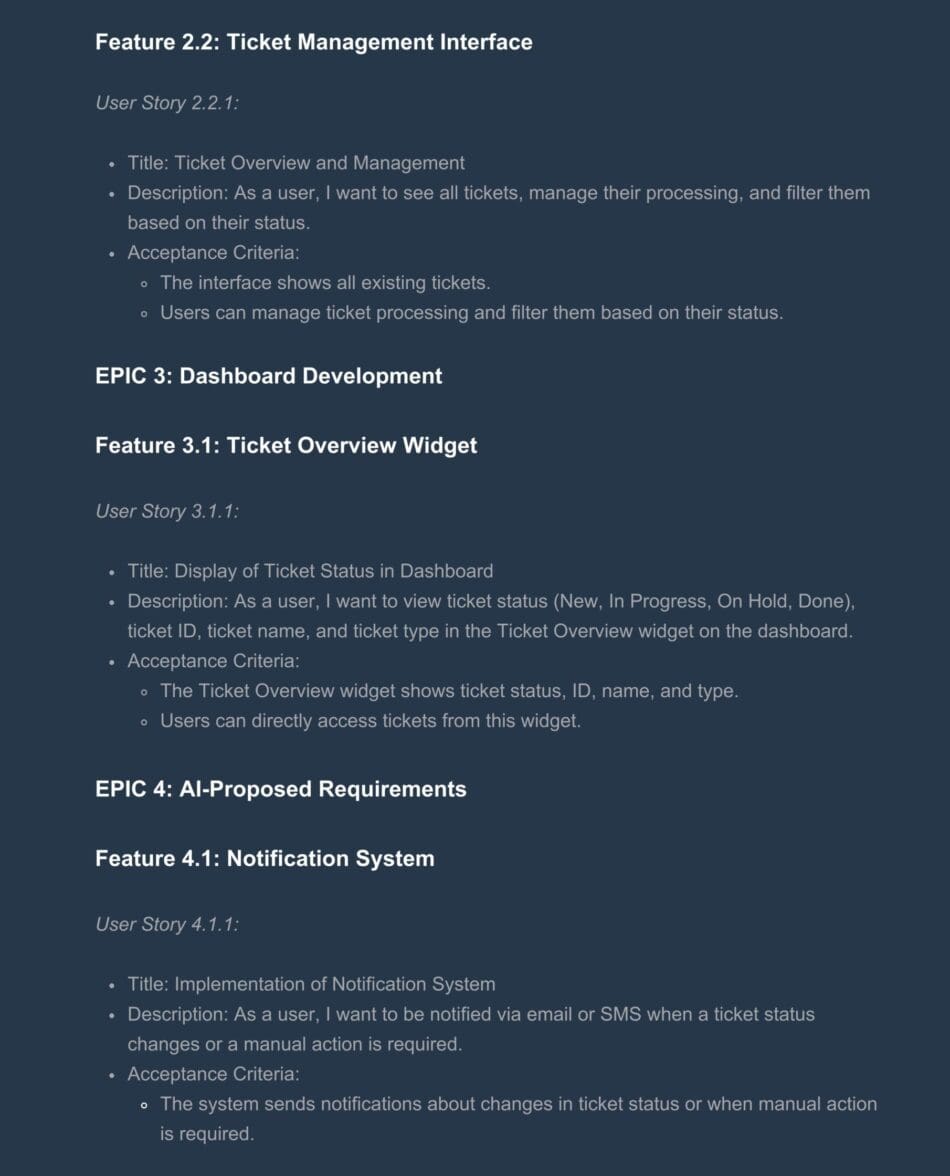
STEP 4: Uploading to your DevOps platform
The meticulously organized backlog can then be seamlessly uploaded to project management platforms like Azure DevOps. You can prompt the AI to format the backlog in the specific format required by the platform, such as an Excel template with particular columns, streamlining the process further.
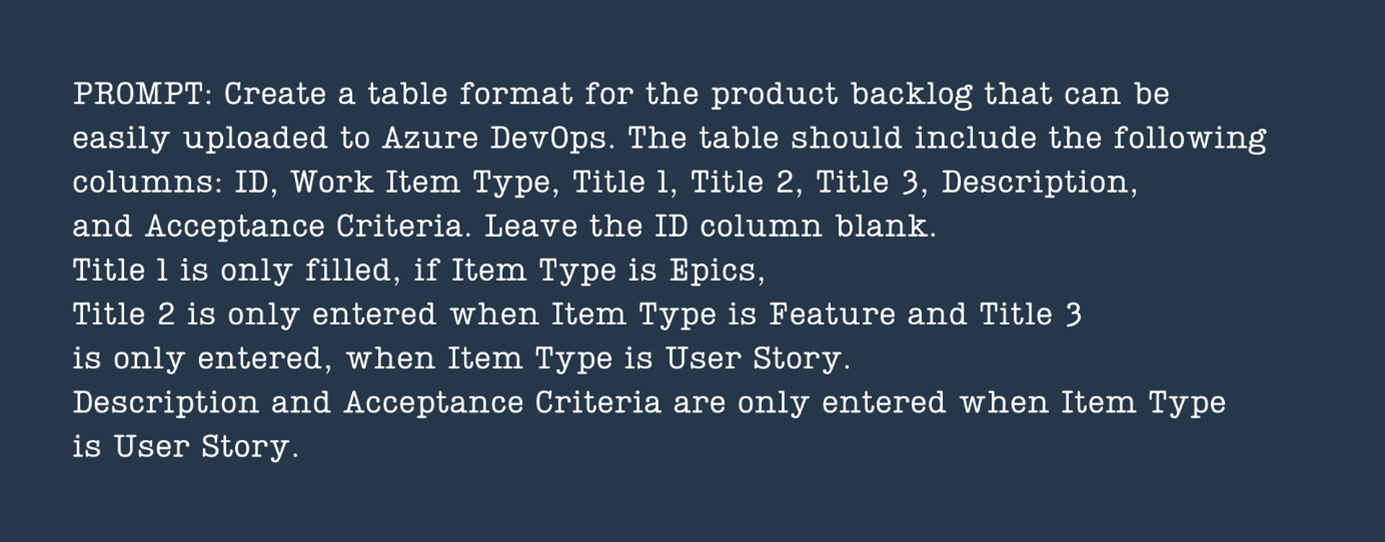
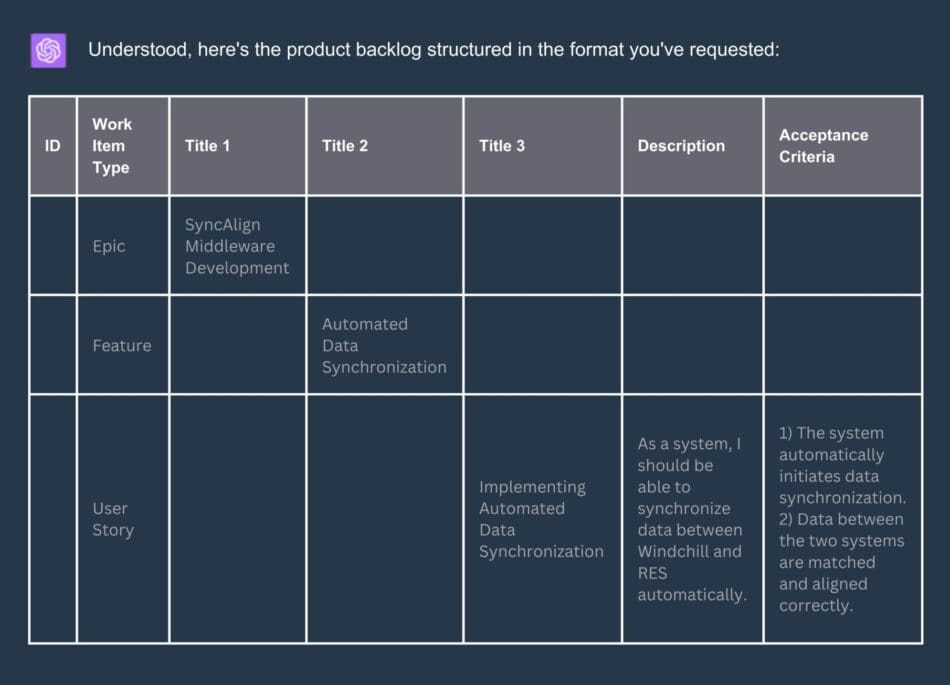
STEP 5: Designing the UI
Finally, based on the backlog, ChatGPT can take on the role of a virtual UI designer to propose a layout for a dashboard.
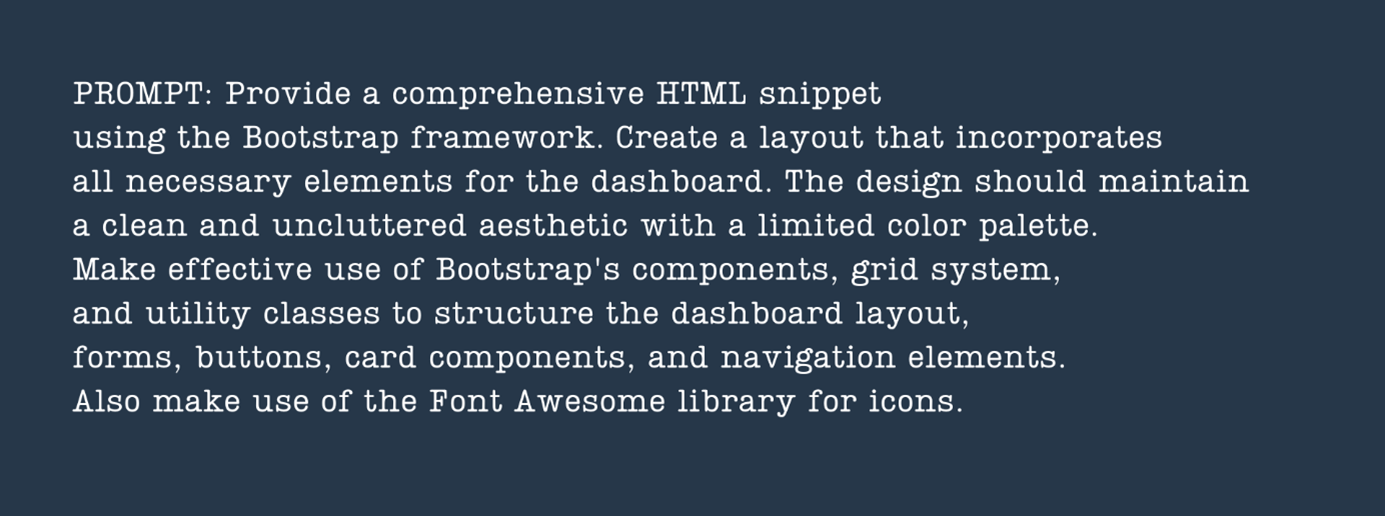
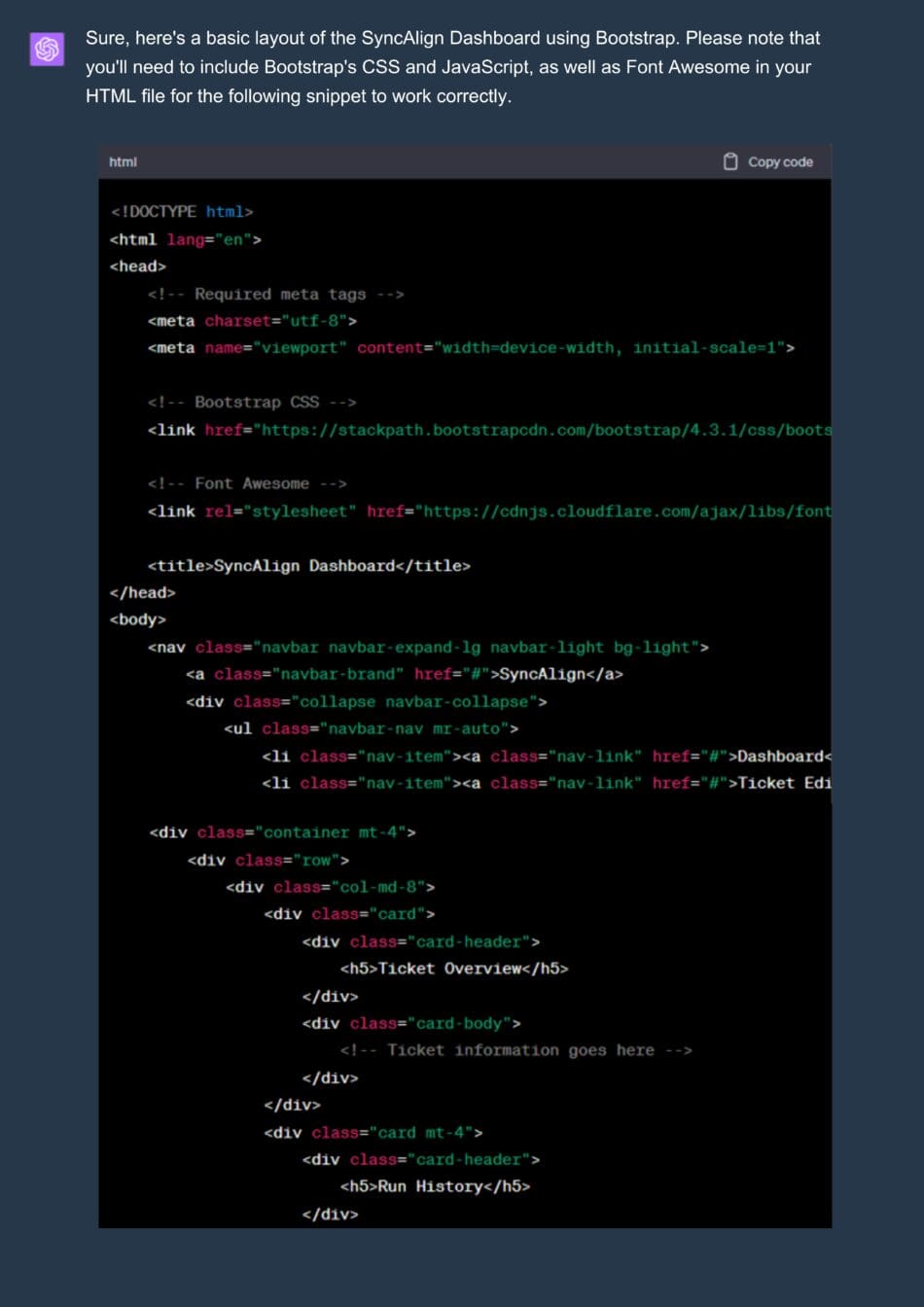
The AI returns a basic layout for the dashboard. With another prompt, we force the AI in the second step to refine the basic layout, fill in gaps, and insert imaginary test datasets to display data on the dashboard.

And just like that, we’ve achieved a noteworthy first result! All it took was nesting the output into an HTML file. Go ahead and check out the result for yourself.
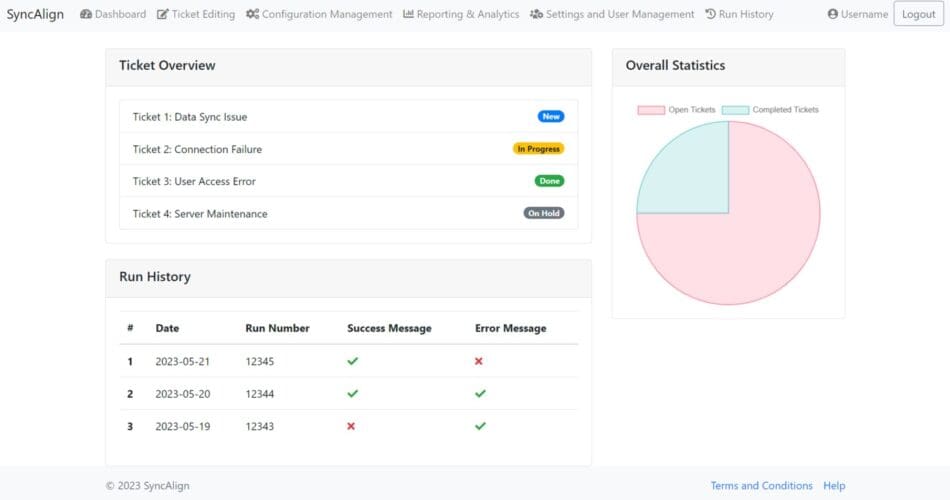
Keep in mind, this layout is generated entirely by AI, without any human intervention. While it might not be perfect, it provides a solid starting point with minimal effort – all it takes is asking the AI!
As a final touch to our project, we can now incorporate plugins, such as html.to.design. This allows us to transfer our HTML page directly into platforms like Figma, where we can continue refining our prototype.
As we can see, each step illustrates how AI can streamline the software development process, offering efficiency, accuracy, and speed at each juncture.
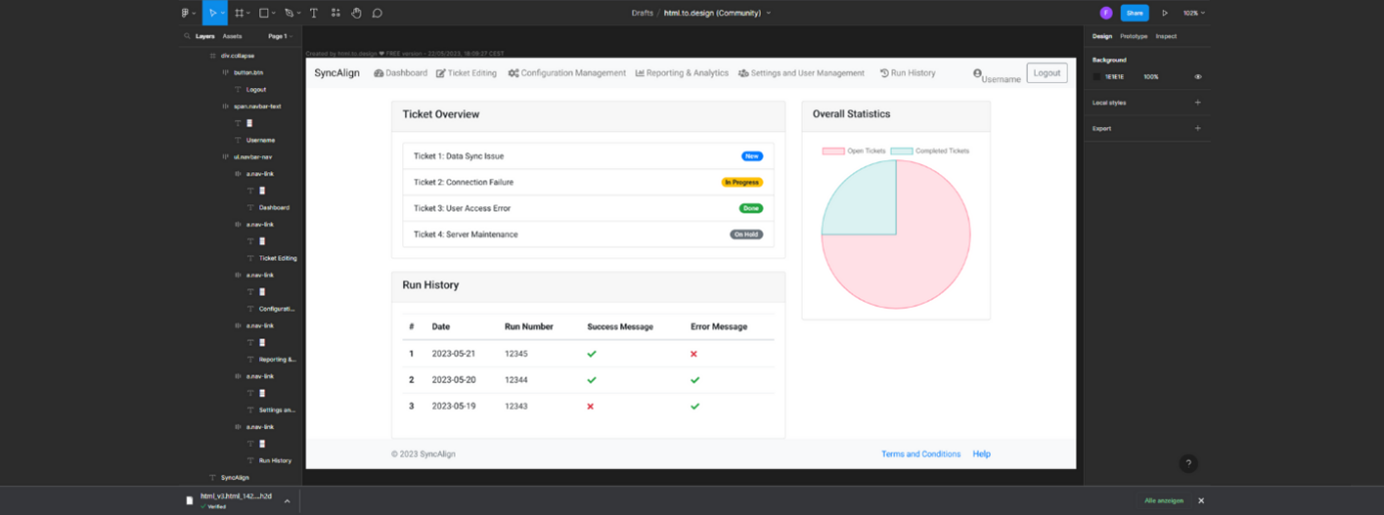
The Learning Curve: Embrace AI, But Don’t Forget Your Team
As we approach this future teeming with promise, it’s crucial to remember that the human element remains indispensable. We must ensure that our team is part of this transformative journey. Just as we remember how the Internet, often hailed as the fastest innovation ever, took decades to mature into what it is today, we should keep in mind that the pace of AI innovation is exponentially faster. And yet, even with the internet revolution, we left some people behind, unable to keep pace with its rapid progression. Every one of us likely knows someone who still struggles to transfer a PDF file from a disk drive to a computer. Now, imagine the gap if we don’t start educating people about AI.
As these AI technologies evolve, it’s imperative to make continuous learning a priority for your employees to adapt to these changes. With the pace of AI innovation accelerating, ensuring your team is aboard this rapidly moving train is more critical than ever.
Transparent communication with your team about these changes is vital. Encourage them to view AI not as a threat but as a powerful tool that complements their skills, enhances their efficiency, and opens up new opportunities. Provide training programs, and workshops, and share real-life examples of successful AI implementation to help ease the transition and inspire them.
The reality is, AI isn’t just about buzzwords or science fiction. It’s a transformative force reshaping the software development landscape today. By embracing AI, we can unlock vast potential in accelerating our projects, reducing errors, and promoting efficiency. Let’s seize this opportunity, take everyone on this exciting journey, and ensure our teams are ready to thrive in this rapidly evolving future.
YOUR POINT OF CONTACT
You’d like to know more or require our support?
We look forward to hearing from you!
